
Those billowy white orbs seen on flowering shrubs this time of the year are not puffs of cotton candy. Instead, they are the flowering structures of Hydrangea paniculata, which is one of a number of hydrangea species that do well in Missouri. If plants are available in nurseries, fall is an ideal time to plant any of the hydrangeas which are sure to add color and a touch of "old fashioned" charm to the landscape.

Few other flowering shrubs can match hydrangea, when it comes to an elegant display of color.
Hydrangea is a genus in the plant family Hydrangeaceae. The genus contains nearly 75 species of shrubs or small trees, most of which are native to the region of Asia now occupied by China, Korea and Japan. The word, hydrangea, is derived from the Greek hydro meaning "water" and angeion meaning "vessel". Although the name was given to the plant because of the shape of its seed pods, it is fitting in another way. As a general rule, hydrangea plants require a bit more water than other landscape shrubs and should never be allowed to become drought stressed.
From the standpoint of flower morphology, hydrangeas can be divided into two main groups: those that produce mopheads and those that produce lace-caps. Mophead flowers are large, round and billowy. As the name implies, they somewhat resemble the head of a mop. What appears to be flower petals actually are showy bracts that subtend small, sterile flowers. Alternatively, lace-cap flowers are round and flat. The name is derived from their similarity in appearance to a flat cap (hat) with frilly edges. Flowerheads have small, fertile flowers in their center, surrounded by outer rings of larger, sterile flowers containing showy bracts. Panicle-flowered hydrangeas differ slightly in morphology from either of the above but, most often, are grouped with the mopheads.

Close up of a lace-cap hydrangea flowerhead.
Panicle hydrangea (Hydrangea paniculata) can be trained as a single trunk (small) tree, but probably is most often grown as a large, multi-stemmed shrub. It produces white flowers in large panicles that are somewhat cone-shaped in form. Considered by many to be the easiest hydrangea to grow, this species thrives in full sun. From late July into August, it puts on a stunning display or large mophead flowers that are sure to attract attention. In mild climates, it may eventually reach a height of 25. Plants are more floriferous and attractive when maintained at a height of six to ten feet. There are many named cultivars of Hydrangea paniculata, with 'Peegee,' 'Limelight,' and 'Dolly' being popular ones. If space is a problem, the dwarf cultivar 'BoBo' forms large panicles but achieves a mature height of only about three feet.
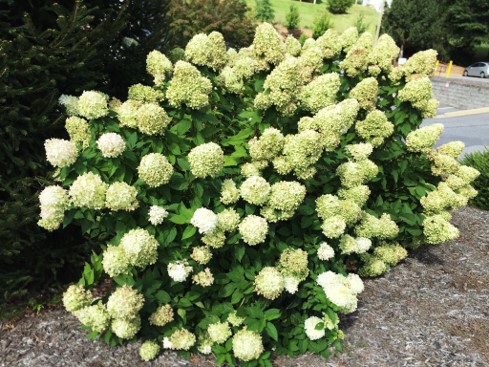
Hydrangea paniculata 'Peegee', one of the leading panicle hydrangea cultivars. (credit: North Carolina State University)
Hydrangea macrophylla, also known as bigleaf or florists' hydrangea, has been an important greenhouse crop for decades. Individual flowers of bigleaf hydrangea contain large, showy sepals which surround a center core of smaller, less conspicuous flowers. This species has been dubbed the chameleon of the hydrangea world, since the color of its flowers can be controlled by altering the plant's soil environment. Flowers are pink if the plant is growing at a soil pH that is nearly or slightly above neutral. Blue flowers can be produced by acidifying the soil with aluminum sulfate. In actuality, it is the element aluminum which turns the flowers blue. However, aluminum is more readily available for plant uptake at low pH values, hence the need to keep pH low. The color of white hydrangea flowers cannot be changed. There are over 600 named cultivars of bigleaf hydrangea.
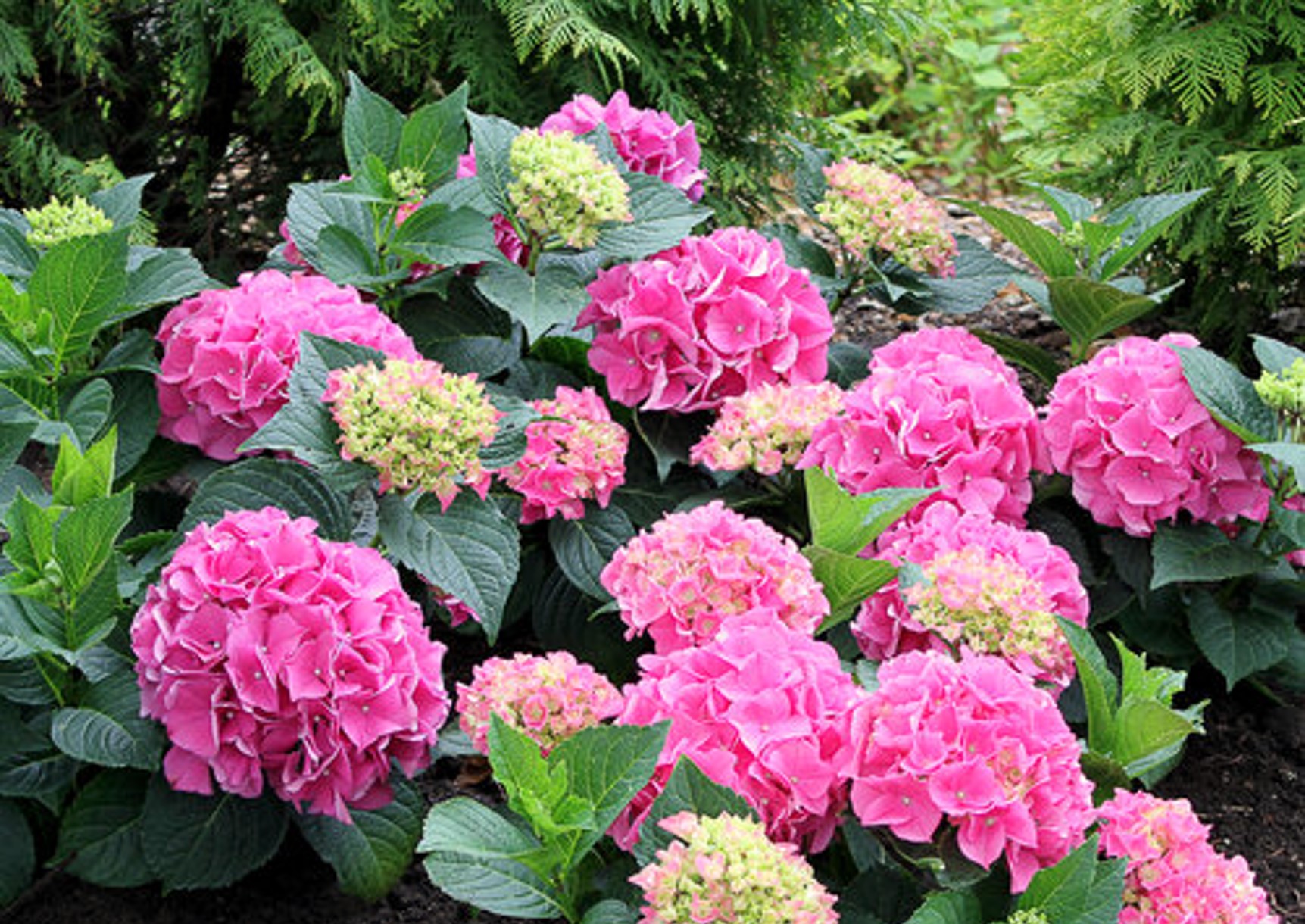
Hydrangea macrophylla 'Cityline® Vienna' illustrating mophead flower morphology. (credit: Proven Winners)
Hydrangea serrata, also known as mountain hydrangea, is similar to H. macrophylla except it is a more compact shrub with smaller flowers and distinctly serrated leaves. It bears lace-cap flowers on previous year's growth and, like bigleaf hydrangea, the color of its blossoms can be changed by adjusting soil pH. A full-sun plant in cooler areas, a more protected exposure from hot afternoon sun is preferred in warm areas. This hydrangea is a bit more susceptible to powdery mildew than other hydrangeas. Cultivars of mountain hydrangea have been developed that rebloom during the growing season.
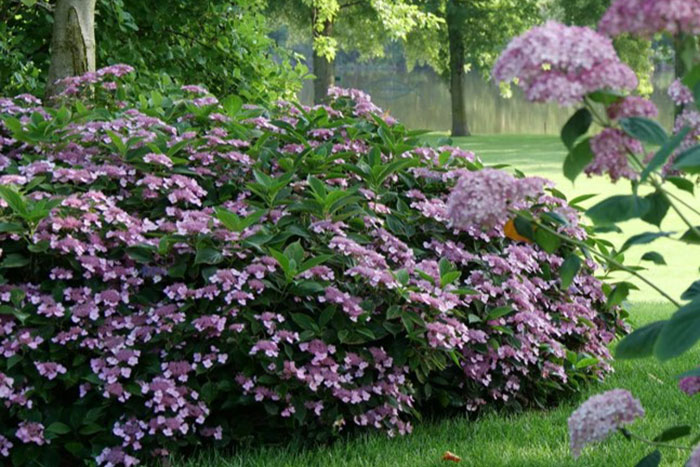
Hydrangea serrata, also known as mountain hydrangea, available in cultivars that rebloom. (credit: Proven Winners)
Another hydrangea suitable for outdoor, garden conditions is Hydrangea arborescens, most often referred to as smooth hydrangea. Unlike Hydrangea macrophylla, this species flowers on new growth. Therefore, plants can be pruned more severely and still flower well. Although available primarily in white, it bears large flower clusters that are very attractive. 'Annabelle' is an outstanding cultivar of this species of hydrangea and bears stunning white mophead flowers much larger in size than most smooth hydrangeas. Blooms of 'Annabelle' appear in late spring and can approach 12 inches in size.
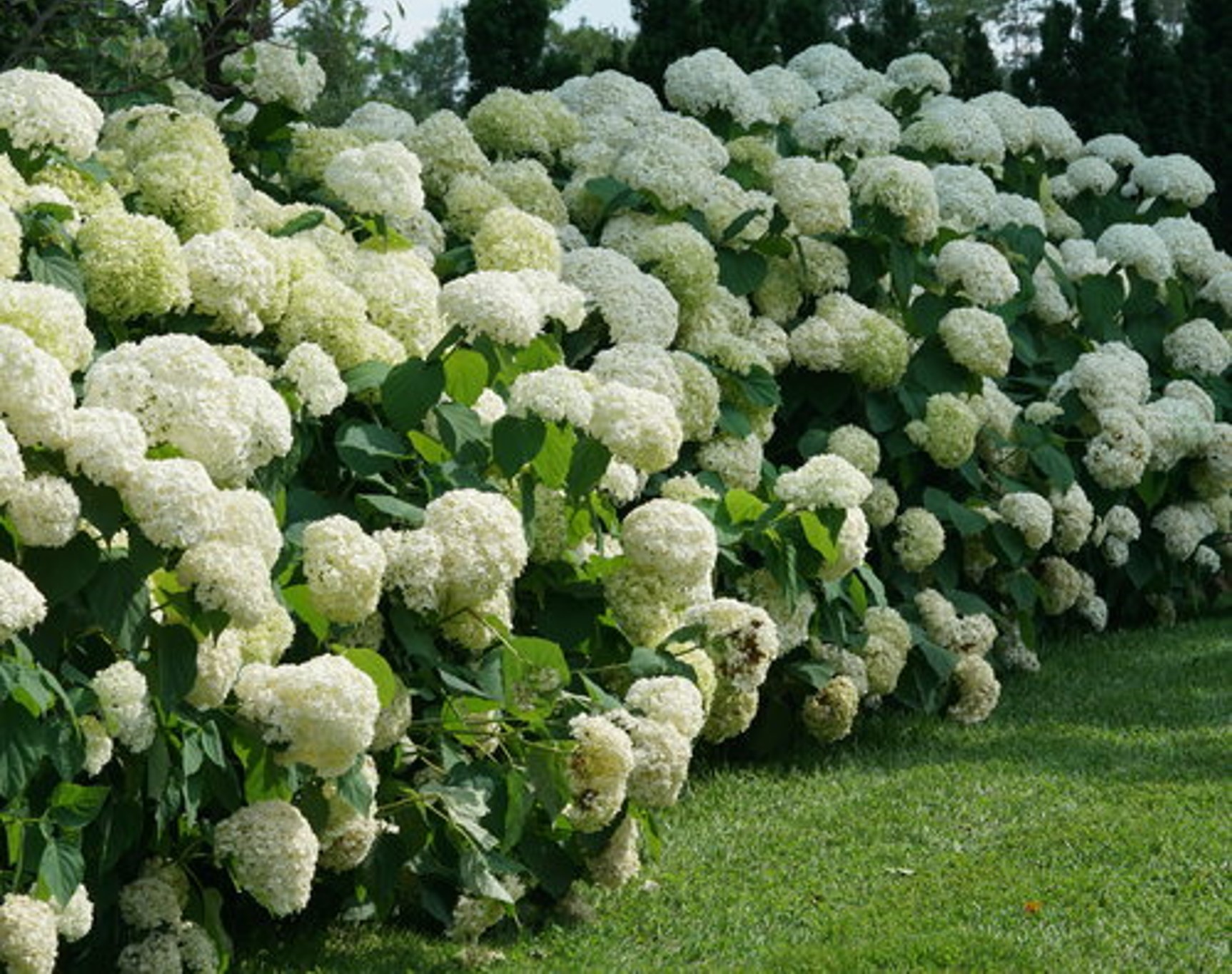
Hydrangea arborescens 'Incrediball', an example of a smooth hydrangea. (credit: Proven Winners)
Oak-leaf hydrangea (Hydrangea quercifolia) is very attractive and well adapted to our climate. It has large, lobed (oak-like) leaves which turn red in the fall. It grows and flowers well in shade and is a good choice for difficult, low-light areas. It produces white, somewhat pyramidal flowerheads in early summer which gradually change color to pinkish-purple. This color is maintained until the flowers turn brown in the fall. Oak-leaf hydrangea is a shrub with relative few problems and deserves more attention than it currently receives.
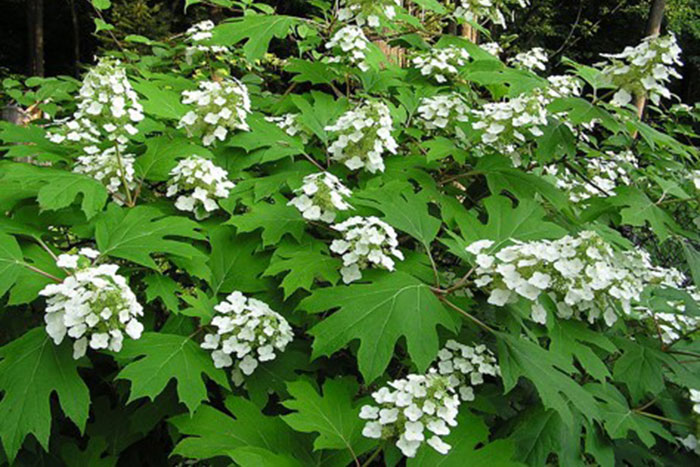
Hydrangea quercifolia, also known as oak-leaf hydrangea, is a good choice for low-light areas. (credit: wikipedia.com)
In general, hydrangeas are relatively care-free and easy to maintain. Most species prefer an organically rich, well-drained garden loam. Sun exposure varies according to species, but in many cases, hydrangeas fail to bloom because they do not receive adequate sunlight. Soil moisture is important and should remain constantly moist, but not wet. As far as maintaining soil fertility is concerned, a light application of a balanced, all-purpose fertilizer such as 8-8-8 or 10-10-10 in March, May, and July should suffice. Spread it around the dripline of the plant and water in well.
Pruning is an important cultural consideration for hydrangea. Hydrangea species that flower on "new wood" (current year's growth) should be pruned in late winter or early spring. Smooth hydrangea is an example of a species that blooms on new wood. In contrast, those species that flower on "old wood" (growth from the past year) often require very little pruning. When pruning is necessary, it should be done shortly after flowering. This allows for bud growth and development during the remaining portion of the growing season. Oak-leaf hydrangea is an example of a species that flowers on old wood.
For additional information about this very useful, attractive garden shrub, contact the webpage of the American Hydrangea Society (https://americanhydrangeasociety.org). It contains a wealth of information that both novice and experienced gardeners alike should find helpful.